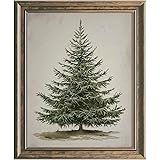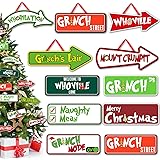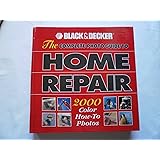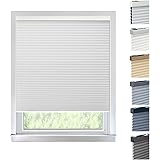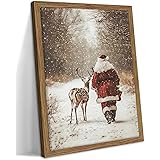If you just watched the delightful video above, you likely felt a familiar tug at your heartstrings—a longing for that cozy, inviting warmth only an English cottage-style kitchen can offer. I remember visiting a quaint countryside home once, where stepping into the kitchen felt like a warm embrace. Every detail, from the soft pastel cabinets to the well-worn wooden table, whispered stories of family gatherings and comforting meals. It’s more than just a kitchen; it’s a living testament to tradition and home. This beautiful aesthetic, often seen in English cottage-style kitchens, truly embodies a timeless charm that many homeowners aspire to recreate.
The allure of an English cottage kitchen lies in its ability to blend rustic comfort with traditional elegance, evoking a sense of peaceful, country living. It’s a design choice for those who appreciate simplicity, enduring quality, and a deeply homely atmosphere. Let’s dive deeper into how you can cultivate this enchanting look in your own home, expanding on the wonderful ideas presented in the video.
Embracing the English Cottage Kitchen Look
Creating an English cottage kitchen is less about rigid rules and more about cultivating a feeling. It’s about warmth, history, and a touch of understated elegance. Every element works together to create a space that feels lived-in, loved, and incredibly welcoming.
The Heart of the Home: Cozy Color Palettes
The foundation of any inviting English cottage kitchen begins with its color scheme. The video highlighted soft, muted palettes, and this is truly crucial. Imagine walking into a space that instantly calms you; that’s the power of these hues.
- Soft Pastels and Earthy Tones: Cream is a classic choice, offering a gentle warmth that brightens without being stark. Light greens, like sage or mint, bring a touch of nature indoors, reminiscent of rolling English hills. Soft blues, akin to a clear sky, introduce a serene calmness. Dusky pinks can add a subtle romantic or vintage touch, preventing the space from feeling too traditional or overly feminine by pairing with more robust colors.
- Accents of Wood: Beyond the primary wall or cabinet colors, the natural warmth of various wood tones plays a pivotal role. Exposed wooden beams, butcher block countertops, or even a robust farmhouse table can ground the lighter colors, adding depth and a sense of enduring quality. This combination ensures the space feels both airy and grounded.
- Layering Shades: Don’t be afraid to use different shades of the same color. For instance, a soft blue on cabinets might be complemented by a slightly deeper blue in a patterned curtain or a pale cream wall. This layering adds visual interest without overwhelming the senses.
Celebrating Nature: Essential Materials
Authenticity in an English cottage kitchen is deeply rooted in natural materials. These elements provide durability, texture, and a sense of history that mass-produced alternatives simply cannot replicate.
- Wood, Wood, Everywhere: As the video mentioned, wood is truly predominant. For cabinetry, consider painted wood with traditional styling, or even distressed wood for an aged look. Wide plank wood flooring adds a rustic foundation, while exposed wooden beams in the ceiling create architectural interest and a classic, old-world feel. Pine, oak, and even reclaimed timber are excellent choices for their character and warmth.
- Sturdy Countertops: Butcher block countertops are a staple, offering a tactile surface that ages beautifully with use. Stone options, such as slate, soapstone, or even a honed marble, provide a cool, durable surface that feels historically appropriate. For flooring, traditional terracotta tiles bring a European warmth and a touch of earthiness.
- Metal Accents: Don’t overlook the charm of brass, copper, or wrought iron. These metals can appear in hardware, light fixtures, or even decorative items, adding a layer of authenticity and a subtle gleam.
A Story in Every Piece: Eclectic Furniture
One of the most charming aspects of an English cottage kitchen is its “unfitted” look. Unlike modern kitchens with built-in, uniform cabinets, this style embraces a collection of pieces that appear to have been gathered over time. This creates a wonderfully lived-in vibe.
- Free-Standing Finds: Think beyond built-in cabinets. A large, reclaimed armoire can serve as a pantry or linen storage, adding a furniture-like quality to the kitchen. Dressers can be repurposed as charming islands or sideboards, offering both storage and display space. A traditional plate rack, perhaps filled with mismatched china, becomes both functional and a key decorative element, proudly showcasing treasured items.
- Mix and Match: The beauty here is in the imperfection. Don’t worry about all your pieces matching perfectly. A vintage hutch next to a more modern-looking worktable can create a harmonious balance, suggesting a history of gradual accumulation rather than a single, planned purchase. This approach gives your kitchen genuine character and personality.
- Comfortable Seating: A sturdy wooden table paired with an assortment of chairs—perhaps a bench on one side and mismatched Windsor chairs on the others—invites lingering conversations and family meals, reinforcing the cozy atmosphere.
Foundational Fixtures: Layout and Appliances
While the overall aesthetic is informal, certain fixtures are emblematic of the English cottage kitchen, establishing its functional heart.
- The Aga or Range Cooker: As highlighted in the video, a traditional range cooker, often an Aga, is much more than an appliance; it’s the undisputed centerpiece. These substantial, often brightly colored, cookers provide consistent heat and a focal point for the kitchen. Even if an Aga isn’t feasible, a quality range cooker with a classic aesthetic can capture this feeling, anchoring the space with its robust presence.
- The Farmhouse Sink: A deep, substantial farmhouse sink, typically made of porcelain or copper, is both highly functional and a critical style element. Its generous size makes washing large pots a breeze, and its exposed front adds a touch of historical charm. Pair it with a traditional bridge faucet in brass or chrome for a truly authentic look.
- Open Shelving: Instead of rows of upper cabinets, open shelving is a hallmark. This allows you to display beautiful ornate dishes, antique teapots, cherished heirlooms, and everyday essentials. It encourages a curated display, making your kitchen feel personal and inviting, rather than hidden away. It also offers practical access to frequently used items.
The Art of Detail: Decorative Touches
The true magic of an English cottage kitchen often lies in its decorative details. These small elements collectively weave a rich tapestry of comfort and charm.
- Textiles Tell a Story: Embrace patterned curtains in a delicate floral, gingham, or plaid. These can be simple tie-backs or cafe curtains, allowing light in while adding a pop of color and texture. For table linens and chair cushions, opt for similar fabrics to enhance the cozy charm. Imagine a floral tablecloth peeking out from under a basket of freshly baked bread.
- Art and Wall Decor: Wall decor in these kitchens isn’t just an afterthought; it’s a storytelling element. Watercolor paintings of landscapes, botanical prints, or even framed pressed flowers can complement the soft color palette and add a touch of rustic elegance. The video specifically mentioned decorative plates as wall decor, and this is a fantastic way to display heritage pieces or simply add visual interest with their varied patterns and colors. A collection of vintage cutting boards leaning against a backsplash also adds an artisanal touch.
- Collected Curiosities: Little vignettes of collected items—a cluster of antique cookbooks, a ceramic pitcher filled with fresh wildflowers, or a small collection of vintage measuring cups—contribute to the lived-in, accumulated feel. These are the elements that truly make a kitchen feel like “home.”
Let There Be Light: Illumination Strategies
Lighting is paramount in achieving the warm and inviting atmosphere central to an English cottage kitchen.
- Embrace Natural Light: Maximize any natural light available. Opt for sheer, light curtains that filter sunlight gently, or leave windows unadorned if privacy isn’t an issue. Natural light instantly brightens the space and connects the indoors with the garden aesthetic.
- Thoughtful Artificial Lighting: For evenings, choose artificial light fixtures that enhance the rustic feel. Wrought iron chandeliers or pendants, copper sconces, or even ceramic-based lamps can provide a warm, inviting glow. Candles in vintage holders or on a windowsill add an extra layer of soft, flickering light, perfect for creating a truly cozy atmosphere during dimmer hours.
- Layered Lighting: Combine overhead ambient lighting with task lighting (like under-cabinet lights) and accent lighting (like a small lamp on a shelf) to create depth and ensure every corner of your English cottage kitchen feels well-lit and inviting.
Adding Your Unique Touch to an English Cottage Kitchen
While the style has its defining characteristics, the true beauty of an English cottage kitchen comes from its personalization. It should reflect you and your family’s story.
Hands-On Charm: DIY Elements
Injecting your own creativity through DIY projects can imbue your kitchen with unparalleled character and a sense of pride.
- Hand-Painted Backsplash: As the video suggested, hand-painting ceramic tiles for a personalized backsplash is a wonderful idea. Consider simple motifs like wildflowers, small birds, or abstract patterns in your chosen color palette. This makes your kitchen uniquely yours.
- Creative Storage Solutions: Transform an old wooden ladder into a rustic pot rack, hanging above an island. Repurpose vintage crates or baskets for charming and accessible storage for fruits, vegetables, or even kitchen towels.
- Refinished Furniture: Give an old dresser or cabinet a new lease on life with a fresh coat of paint in a soft pastel, followed by light distressing to achieve a charming, aged patina.
Harmonious Blends: Mixing Old with New
A practical yet stylistically faithful design often involves a clever blend of modern convenience and vintage charm.
- Integrating Appliances: Modern appliances are essential for today’s living, but you can choose those with a vintage-inspired aesthetic, like retro refrigerators or range cookers. Alternatively, seamlessly integrate contemporary appliances behind custom paneling that matches your cabinetry, allowing them to recede into the background.
- Balancing Act: Pair a sleek, functional dishwasher with a beautiful antique hutch. The contrast often highlights the beauty of both, preventing the space from feeling like a museum while retaining its historical essence.
Bringing the Outdoors In: The Garden Connection
The rural life aesthetic is deeply intertwined with nature, and connecting your kitchen to the outdoors reinforces this beautifully.
- Direct Views: If you’re fortunate enough to have a garden view, emphasize it. Keep window treatments minimal to frame the natural beauty outside. Position your dining area or a cozy window seat to take full advantage of the greenery.
- Indoor Greenery: Even without a direct garden view, you can bring the outdoors in. Fill ceramic pots with fresh herbs on a windowsill, display cut wildflowers in a vintage pitcher, or cultivate small potted plants on open shelves. This adds life, color, and a fresh scent to your English cottage kitchen.
- Outdoor Access: Easy access to the outdoors, perhaps through a stable door or French doors, enhances the feeling of connection to nature, inviting fresh air and the sounds of the garden into your home.
The essence of an English cottage-style kitchen is truly about crafting a space that feels deeply personal, warm, and inviting. It’s a place where every element contributes to a sense of history, comfort, and timeless beauty, making it the undeniable heart of your home.


